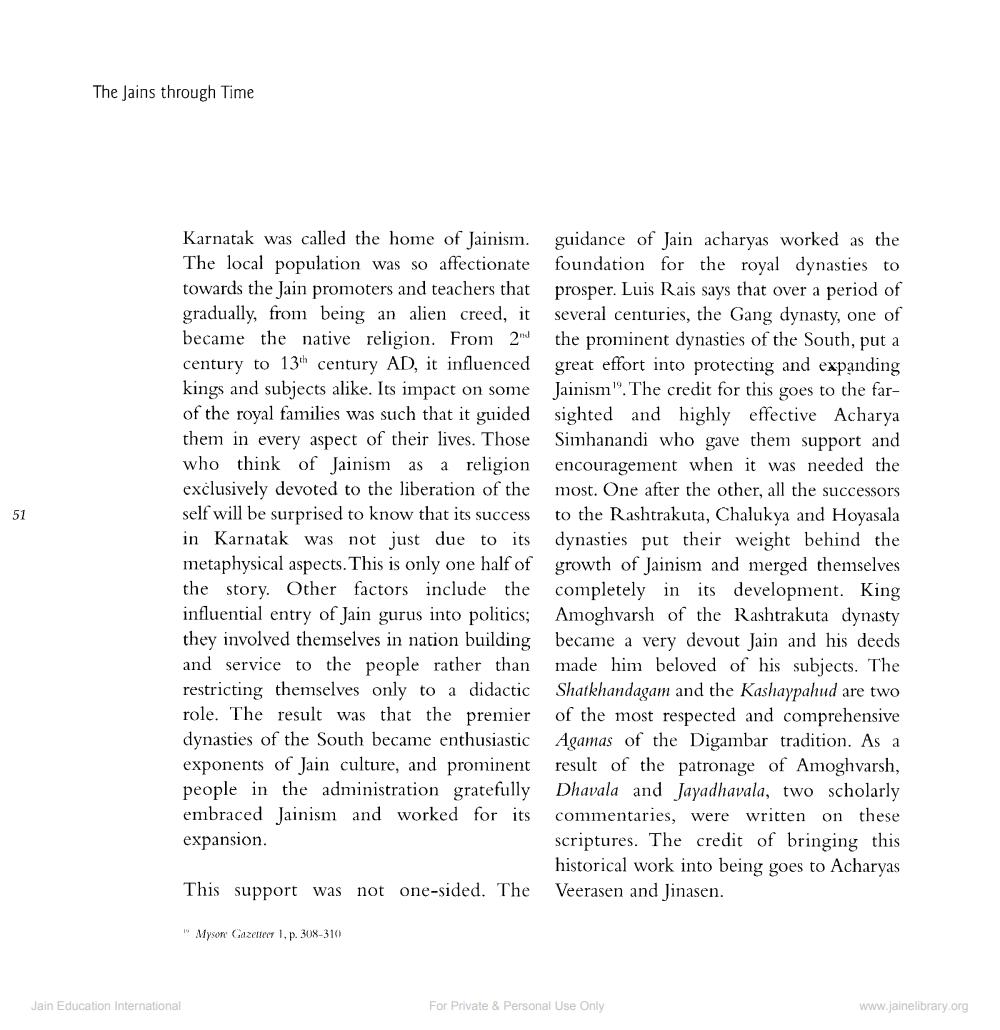________________
51
The Jains through Time
Jain Education International
Karnatak was called the home of Jainism. The local population was so affectionate towards the Jain promoters and teachers that gradually, from being an alien creed, it became the native religion. From 2 century to 13th century AD, it influenced kings and subjects alike. Its impact on some of the royal families was such that it guided them in every aspect of their lives. Those who think of Jainism as a religion exclusively devoted to the liberation of the self will be surprised to know that its success in Karnatak was not just due to its metaphysical aspects. This is only one half of the story. Other factors include the influential entry of Jain gurus into politics; they involved themselves in nation building and service to the people rather than restricting themselves only to a didactic role. The result was that the premier dynasties of the South became enthusiastic exponents of Jain culture, and prominent people in the administration gratefully embraced Jainism and worked for its expansion.
This support was
Mysore Gazetteer 1, p. 308-310
not one-sided. The
guidance of Jain acharyas worked as the foundation for the royal dynasties to prosper. Luis Rais says that over a period of several centuries, the Gang dynasty, one of the prominent dynasties of the South, put a great effort into protecting and expanding Jainism". The credit for this goes to the farsighted and highly effective Acharya Simhanandi who gave them support and encouragement when it was needed the most. One after the other, all the successors to the Rashtrakuta, Chalukya and Hoyasala dynasties put their weight behind the growth of Jainism and merged themselves completely in its development. King Amoghvarsh of the Rashtrakuta dynasty became a very devout Jain and his deeds made him beloved of his subjects. The Shatkhandagam and the Kashaypahud are two of the most respected and comprehensive Agamas of the Digambar tradition. As a result of the patronage of Amoghvarsh, Dhavala and Jayadhavala, two scholarly commentaries, were written on these scriptures. The credit of bringing this historical work into being goes to Acharyas Veerasen and Jinasen.
For Private & Personal Use Only
www.jainelibrary.org




